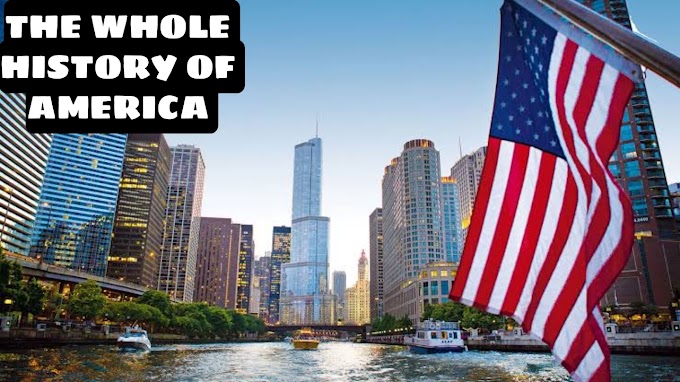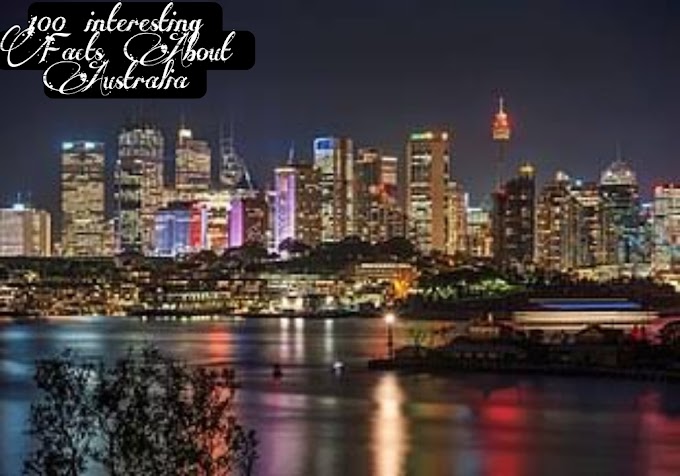THE WHOLE HISTORY OF PERU
Hello Guys:
Welcome to Countries Facts so Today in this Article I will show you the whole history of Peru The South American nation of Peru has a population of 33 million people. This extremely mountainous country has borders with Ecuador and Colombia to the north. To the east, it borders the gigantic, Portuguese-speaking Republic of Brazil and Bolivia, which has no outlet to the sea. Chile is settled in the rest of the western coast of South America Extending towards Antarctica Argentina, Uruguay, Paraguay, Venezuela Guyana, Suriname, and French Guyana occupy the rest of the South American continent Although the ephemeral Inca empire is the best known pre-Columbian state Numerous kingdoms, empires, and city-states occupied these lands since prehistoric regions, which provided a strong cultural and socio-political foundation for the later Incas. 3,500 BC. This city was part of the Norte Chico civilization that was centered around a little more than a dozen towns and cities. More or less from 3700 BC onwards these settlements were characterized by large communal construction projects including temples, squares and stepped pyramids. Pyramids were built during the same period of time as the Egyptian pyramids although on a much smaller scale and two thousand years before the first pyramids of Mesoamerica were built, further north The Norte Chico civilization is very unusual in history as they built cities , monument structures and irrigation systems without creating ceramics One theory for the downfall of their civilization is that their advances in irrigation technologies made their ancestral homeland less desirable compared to relatively nearby alternative sites as their cities decayed, and were abandoned. eventually numerous smaller settlements and well irrigated, over a wider geographic area they spread north and south During the subsequent Kotosh period pottery was first developed The disparate settlements of this period grew into larger cities, converging into the Chavi culture Throughout During the Chavi period , advances were made in metallurgy, and in agricultural technology the effective cultivation of potatoes, quinoa and corn facilitated the rapid growth of the region's population As increasingly complex urban societies developed, culture became less egalitarian with a powerful social class of priests and hereditary nobility hoarding wealth at the top The centuries of peaceful growth and coexistence of the Chavin period gave way to an era more culturally regionalized, and more prone to war Three rival power centers emerged In Lima, Moche and Nazca The Nazca are famous for the many enormous geoglyphs drawn on the soil of the desert. what they left behind representing animals and geometric patterns Around 400 AD the city-state of Wari Wari was founded, welcomed immigrants from all the cultures of the region and synthesized their spiritual beliefs in a new popular religion. While the city grew rapidly, Wari came to dominate all the city-states on the Peruvian coast Perhaps in response to this threat, the city of Tiwanaku located near the shore of Lake Titicaca in what is now Bolivia united the formerly disunited cities state of the highland lakes under his leadership Although it appears that the two empires had a strained relationship it is generally believed neither of them attempted a large-scale invasion as each faction had a considerable defensive advantage Mysteriously, both empires fell rapidly around the year 1000 and the capitals of both were abandoned with a few decades of difference Famine Thus, natural disasters, civil uprisings, plagues and wars have been reasons that have been considered to explain the reasons for this collapse Perhaps both empires finally fought a war that destroyed the prestige and internal authority of both ensuring mutual destruction In any case, After both capitals were abandoned, many previously minor cities came to the fore. Tiwanaku was succeeded by a weak confederation of prosperous kingdoms and the kingdom of Chimor asserted its authority over most of the Peruvian coast as the Wari empire disintegrated. Around the year 1200 the small city-state of Cuzco was founded by the Inca people, who before lacked importance For more than two centuries the kingdom of Cuzco expanded its territory very little While the city prospered, and its population grew Cuzco periodically plundered its neighbors and in turn, the city was frequently attacked by the neighboring towns of Chanka and Huasca. 1438, the Chanka invaded Cuzco with overwhelming force The Inca king Viracocha fled the city, while his son Pachacuti defended it and defeated the enemy Viracocha then abdicated the thunder in favor of his son Pachacuti the ninth Inca sapa He embarked on various campaigns of conquest, transforming the kingdom into an empire His successors, Túpac and Wayna Qhapaq, enjoyed long reigns and greatly expanded their empire.The empire was at its highest point and was probably inhabited by more than ten million people, and it kept growing Colossal construction programs had been completed such as Machu Picchu and a system of roads that spanned the entire empire The empire seemed to be on the brink of a golden age when a strange disease swept through its lands The speed of its transmission was possibly accelerated by the efficient road system of the Incas Three years earlier, the Spanish conqueror Hernán Cortés had finished the conquest of the Aztec empire He had not only brought weapons, horses and steel with his army Involuntarily, he also brought with him a more effective weapon He brought diseases that had never been seen in the new world smallpox, measles, typhus, influenza and diphtheria all of them devastated the Inca empire in repetitive outbreaks The Inca sapa, Wayna Qhapac, and his heir, died from the plague His children, Huáscar and Atahualpa continued to fight a brutal civil war that lasted three years Atahualpa was the winner, but more than one hundred thousand of the best soldiers of the empire They perished in the fight Then, Francisco Pizarro González, second cousin of Hernan Cortés invaded with a small expeditionary force Pizarro captured Atahualpa during a negotiation and then tens of thousands of the dissatisfied vassals of the Incas joined the cause of the Spanish, particularly the traditional enemies of the Incas, the Huanca and the Chanka After a huge sum of gold silver was paid for the li Atahualpa Pizarro's beration had him executed In 1537, Cuzco was taken after a 10-month siege 35 more years passed, 40 in total, before the conquest of the Incas was total It is estimated that at least 95% of the population of the Inca empire died 15 years after the rise of their power Although many perished from the war and its horrible side effects , most died from disease In 1542 the Viceroyalty of Peru had been established with a capital on the coast, in Lima Under the Spanish Empire, the Viceroyalty of Peru expanded to cover most of the South American continent before being divided into smaller viceroyalties Throughout the Spanish Empire, Peru played a vital role in its finances.In particular, a mountain: Potosi. For more than a century, more than 60% of the silver extracted in the world came from the Potosí hill At an altitude of more than 15 thousand feet (4800 m) above sea level is Potosí, a city with the same name that was one of the richest and most popular cities in the world It was one of the fastest growing cities in history after silver was discovered there growing from a few hundred, to more than 200 thousand people, over the course of a few A few decades later, with the decrease in silver production, the city declined During the 18th century, two great rebellions occurred Where the Quechua and Aymará peoples fought to establish independent territories Both were brutally suffocated In 1826, Peru gained its independence from Spain After a war that lasted fifteen years that was part of the Spanish-American wars of independence, Peru and Bolivia joined to form an ephemeral state that was dissolved after the failure of a war against a Chile In total, Peru fought 9 wars together with and against its neighbors during the 19th century. Most were minor border conflicts, with the exception of the War of the Pacific where both sides suffered 35 thousand casualties. Bolivia lost its access to the sea. 20th century, Peru had more border conflicts with its neighbors And the republic of Peru was ruled mainly by a military junta. Like many other countries, Peru was also the scene of conflicts derived from the Cold War Fortunately, in the last decades the conflict has diminished, while the economy, and the average standard of living, have increased dramatically Stability in the country has also meaning that archeology has flourished in Peru Until relatively recently, very little was known about the pre-Inca civilizations of Peru, such as the Moche. In the fascinating documentary "Lord of Sipan", available from the sponsor of this video, Curiosity Stream la Moche civilization brought to life by actors and beautiful computer-generated reconstructions The Lord of Sipán has been called King Tut of the Americas, as his tomb has shed light on a little-known era. You can see "The Lord of Sipan" on Curiosity Stream. streaming service that hosts thousands of documentaries and multimedia content covering a wide range of topics Worth only $ 2.99 per month, much less than other services Streaming s The annual plan is a bargain, and it's only worth $ 20 for the whole year so go to curiositystream.com/epi and my followers can use the promo code "EPI" during registration, to win a 30-day membership free It is impressive to think that the Moche civilization was buried, forgotten, and unknown until the 20th century and what other civilizations are buried out there. This has been Epimetheus.Thank you and for supporting to our website AND to all of you who like comment and share God Bless You.
















